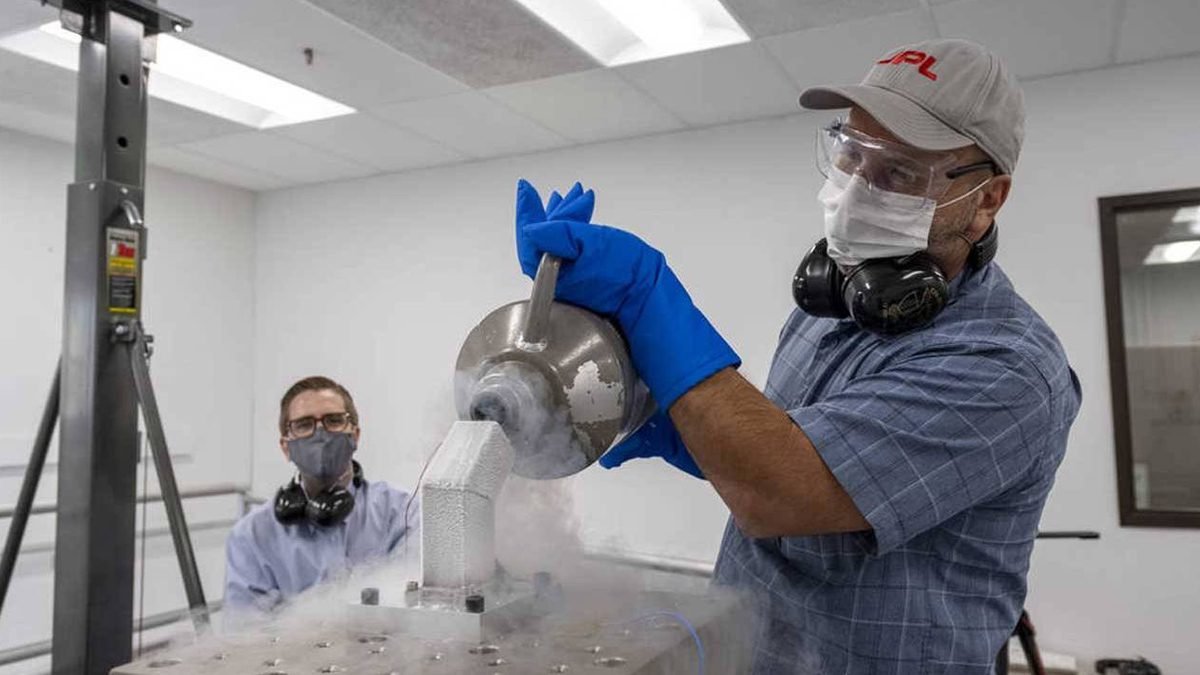NASA’s New Gear to withstand extreme cold temperature of moon

The extremely cold temperature of space is one of the multiple difficulties faced by space explorers. It is expected that the temperature on the South Pole will undergo a drastic fall, especially at night, during the Artemis Mission to the moon, conducted by NASA.
NASA, the hub of space exploring ideas, has further decided to go beyond and explore Europa, one of the 56 named moons that Jupiter has. A similar kind of challenge is expected to be faced by the space scientists in these future missions as well. In Europa, the temperature never reaches a point below -260 degrees in the Fahrenheit scale. NASA, with the hope to bypass all the difficulties faced by the explorers due to the extreme cold, has come up with the resolution to build special gears having the capacity to hold on against the extreme cold.
The gears and the housings in the gearbox are designed in such a way that they get heated at low temperatures. As the housings in the gearbox get heated, a lubricant assures the proper functioning of the gear that safeguards the durability of the steel alloy.
Moreover, a material made up of “Metallic glass” is also developed by a project named Bulk Metallic Glass Gears (BMGG)by NASA. This “Metallic Glass” developed by this project team has the capacity of surviving the extreme cold. It can function smoothly without getting heated.
As the need to heat the gearbox gets terminated, the amount of energy consumed by a spacecraft to function properly is trimmed down to the bare minimum. As observed by NASA, a toll has been put on the operations carried out in cold and dim environments due to the amount of power available on a rover or a lander.
The new gearbox, with the energy saved by it, increases the space for instruments on the spacecraft rover. In addition to the increase in the space for instruments, the energy saved by the gearbox has the ability to extend the duration of the mission.
A testing session has been carried out at JPL to observe how the gearbox and the motor respond to shock or impactful events. Engineers have mounted the gearbox as well as the motor on a turntable beam. The temperature of the gears was reduced to -279 Fahrenheit (approximately) using liquid nitrogen.
Now, to invigorate a shock event a steel projectile was then discharged, aiming at the beam. Liquid nitrogen was constantly added by the researchers over the motor and the gearbox before carrying out a new round of the shock tests. As soon as the nitrogen got drained, a colliding object was then shot aiming at the steel beam to which the motor and the gearbox were mounted.
The shock testing was conducted with the aim of understanding whether events like re-entry, descent, and landing could break the hardware of the spacecraft. In addition to this, the test also gave an insight into the functioning of the gear while collecting a regular sample on the surface of the moon at night.
The shock testing was carried out by researchers twice. In every test, the gear succeeded in withstanding the shock events at atrociously low temperatures. This finally gave NASA the ultimate success that they were trying to reach through this endeavour.

No comments